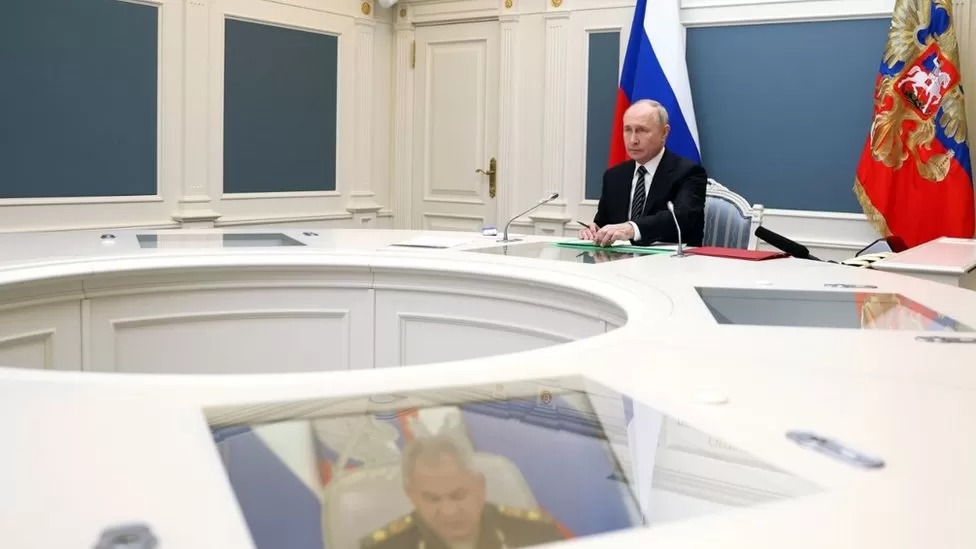In a startling display of military might, Russia has officially announced the successful rehearsal of a “massive” nuclear strike, according to a statement from the Kremlin. This provocative move, designed to simulate a robust response to an enemy nuclear attack, has raised international eyebrows and comes on the heels of Russia’s parliamentary decision to withdraw from a global treaty that prohibits physical testing of nuclear warheads. The ramifications of these actions are far-reaching, with concerns about global security and the potential for a new arms race in the air.
Russia Simulates a ‘Massive’ Nuclear Response
Defence Minister Sergei Shoigu revealed that the recent military exercise was centered on delivering a powerful counterstrike in the event of an enemy launching a nuclear attack against Russia. This ominous announcement was made during a televised briefing where Shoigu recounted the rehearsal to President Vladimir Putin. These maneuvers, undertaken by Russia’s strategic offensive forces, aimed to demonstrate the nation’s capability to deliver a formidable nuclear response.
Russia went on to conduct “practical launches of ballistic and cruise missiles” as part of these exercises. Notably, an intercontinental ballistic missile, Yars, was fired from a test site in Russia’s far-east. Additionally, another missile was launched from a nuclear-powered submarine in the Barents Sea. The footage released by the defense ministry provided a chilling visual representation of Russia’s nuclear capabilities.
International Concerns Over Treaty Withdrawal and Military Demonstrations
The timing of this nuclear rehearsal is particularly disconcerting, given that Russia’s parliament recently passed a law to withdraw the country’s ratification of the Comprehensive Nuclear Test Ban Treaty (CTBT). The international community had agreed on the CTBT in 1996, which aimed to prohibit “any nuclear weapon test explosion or any other nuclear explosion” worldwide. However, Russia’s withdrawal is viewed as a significant setback in the global effort to curb nuclear proliferation.
President Putin justified this move by suggesting it aligns with the position of the United States, which signed but never ratified the CTBT. The decision to abandon the treaty underscores the growing discord between Russia and the West and raises questions about the future of arms control agreements. These developments also come in the wake of Russia’s decision to station tactical nuclear weapons in Belarus, a move Putin claimed was a precautionary measure for territorial defense.
The Geopolitical Implications of Russia’s Recent Actions
The international community is closely monitoring Russia’s actions, given the broader geopolitical implications. Since Russia’s full-scale invasion of Ukraine last year, concerns regarding the potential for nuclear war have been on the rise. While the US government has publicly stated that there is no indication of the Kremlin planning to use nuclear weapons against Ukraine, the recent display of military prowess and withdrawal from the CTBT add uncertainty to an already tense global stage.
Furthermore, Russia’s announcement of a “final successful test” of a nuclear-powered cruise missile, with an alleged unlimited range, raises further questions about the security landscape. Although the development of this experimental weapon was initially disclosed in 2018, its recent demonstration highlights Russia’s commitment to advancing its nuclear arsenal.
In conclusion, Russia’s rehearsal of a “massive” nuclear strike, combined with the withdrawal from the CTBT and the deployment of tactical nuclear weapons, underscores the Kremlin’s determination to strengthen its nuclear capabilities. These actions have sparked international concerns about the stability of global security and the potential for a new arms race. As tensions continue to escalate, diplomatic efforts to maintain peace and prevent further nuclear proliferation become increasingly vital on the world stage.
















